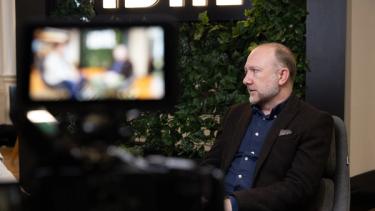Insight6 min read
How to increase ROI with the PPC conversion triangle
Wed Jul 01 2020 | Marketing Team

- Insight
- Performance
- PPC
Tags
Ever struggled to explain the value behind PPC? Or maybe you’ve been questioned by your boss on why you can’t “just make it cheaper and get more results”. At a top level, it’s a method of paying for visits to your site through ads shown in the search engine. But PPC is a whole lot more complex than that. As an expert PPC agency, we use the PPC Conversion Triangle model, designed to help you answer those important questions. We apply this model to our PPC services, simplifying the very complex nature of pay-per-click into a straight-forward, no-nonsense formula.
Why do we use the PPC conversion triangle?
Using this formula allows us to capitalise on top performers. If you have strong keywords in your paid media campaign that are performing incredibly well in terms of conversion, we want to ensure these keywords are being used to their potential. Secondly, we want to reduce wastage and save media spend. We look at key phrases on an individual basis, considering factors such as whether they’re converting well and what their cost per acquisition (CPA) is. Before we jump into the ins and outs of the PPC Conversion Triangle, let’s cover the figures considered in this formula.
What is included in the PPC conversion triangle?
- Cost-per-acquisition CPA = MEDIA SPEND ÷ CONVERSIONS To figure out your CPA, you need to know how much has been spent on your campaign, alongside the number of conversions, and then divide them against one another. Although understanding your CPA is important, you also need to set a realistic target of what you want your CPA to be. For example, if you’re an eCommerce business, you may want to work to a specific percentage of average order value. Quite often, our clients work between 5 – 20 percent but it completely depends on your model. The next stage of understanding your CPA is considering your lead generation. This is a little different as we need to look at the overall business objectives. For example, let’s say you want to convert a sale of £100. We know that 1 in 10 conversions become a sale, so we need to be working to a CPA of around £10.
- Conversion rate CVR = TOTAL NUMBER OF CONVERSIONS ÷ TOTAL TRAFFIC Your conversion rate (CVR) is nice and simple. To calculate this, take the total number of conversions and divide it by the amount of traffic that has visited your website.
- Cost per click CPC = MEDIA SPEND ÷ TOTAL CLICKS TO WEBSITE The third and final piece of the puzzle is your cost per click (CPC). This is essentially the total media spend divided by the number of clicks you’ve had to your website.
How does the PPC conversion triangle work?
To understand how the PPC Conversion Triangle works, the key thing to remember is: CPA = CPC ÷ CVR For example, if you know you have a target CPA of £100 and your CPC is £1, you need a 1 percent CVR to hit your target CPA. Let’s break that down into an example. Imagine you are selling a corner sofa and your CPA is £145. At the moment, Google is telling you the phrase “corner sofa” has a CPC of roughly £1.45 and you also know your website converts at approximately 0.8%. From these figures, you can figure out your CPA will actually be £181, which is over target. This is where the PPC Conversion Triangle can help.
Influencing the figures
Using the above example, the website’s conversion rate needs to increase to 1 percent to get the CPA down to £145. How do you do that? First of all, let's look at the CPC. CPC has a simple bidding model, you can choose to bid less in order to reduce the CPC, but in doing so, you may see a decrease in website traffic. The other option is to focus on the quality score. If you can get your quality score of five up to seven, your CPC will come down. Take a read of our blog on quality score to find out how this can be done. Another method of improving campaign results is to look at the conversion rate. This involves considering the landing page and testing different functions to create the optimal result. For example, let’s say 1 in 10 people who land on your website convert. You may be thinking, 10 percent is a good conversion rate but why can’t it be 15 percent? Conduct simple CRO tests such as how easy the form is to fill in, whether the buttons are big enough and bold enough and where the CTA is located. These tests can provide the insight needed to reduce or remove barriers to conversion which will, in turn, increase the conversion rate. The other factor to consider is your keyword optimisation. This means the types of phrases your paid media campaign is matching against. If, for example, you have the keywords “corner sofa” on broad match, you could also match against a phrase such as “how can I fix my corner sofa” which may not be the desired traffic. As such, you need to ensure the traffic that is coming to your site is as relevant as possible which will help in increasing the conversion rate so also consider your negatives.
The key takeaways
Cost per click and conversion rate are the two figures that make a difference when considering your paid media campaigns. If you can reduce your CPC, you don’t have to worry as much about your conversion rate. If you can increase your conversion rate, you don’t have to worry as much if someone starts bidding more aggressively. As a paid media agency, our core PPC services revolve around generating an ROI for our clients. Considering your campaign objectives alongside your longer-term business goals, we can help develop PPC strategies to drive your brand further. Contact our certified PPC experts to find out more.


